Resources
Our relationship with you is built on trust and transparency. With an aim of keeping you thoroughly informed, we offer valuable information about our funds and more, below. Access our fact sheets, prospectuses, performance reports, and materials for use with clients.
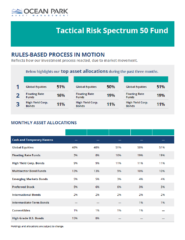
Rules-Based Process in Motion Snapshot: Tactical Risk Spectrum 50 Fund Ending June 30, 2025
Reflects how our truly tactical rules-based investment process reacted due to market movement through June 30, 2025.
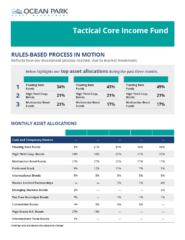
Rules-Based Process in Motion Snapshot: Tactical Core Income Fund Ending June 30, 2025
Reflects how our truly tactical rules-based investment process reacted due to market movement through June 30, 2025.
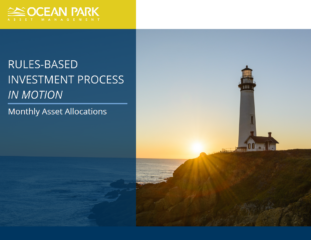
Rules-Based Investment Process in Motion Synopsis: Active ETFs Through June 30, 2025
Reflects how our truly tactical, rules-based investment process reacted with regard to the Ocean Park Active ETFs due to market movement through June 30, 2025.
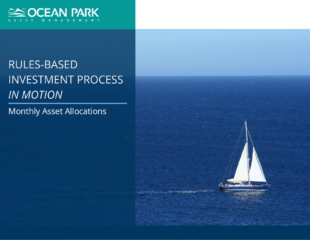
Rules-Based Investment Process in Motion Synopsis: Mutual Funds Through June 30, 2025
Reflects how our truly tactical, rules-based investment process reacted with regard to the Ocean Park Mutual Funds due to market movement over the past 18 months up through June 30, 2025.
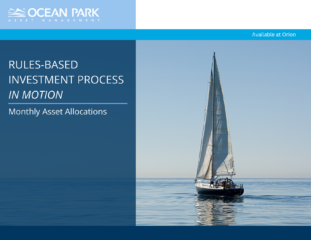
Rules-Based Investment Process in Motion Synopsis: Ocean Park Models Through June 30, 2025
Reflects how our truly tactical, rules-based investment process reacted with regard to the Ocean Park Models due to market movement over the past 18 months up through June 30, 2025.
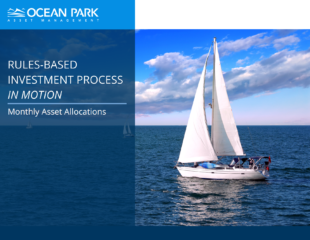
Rules-Based Investment Process in Motion Synopsis: Strategies Through June 30, 2025
Reflects how our truly tactical, rules-based investment process reacted with regard to the Ocean Park Strategies due to market movement over the past 18 months up through June 30, 2025.
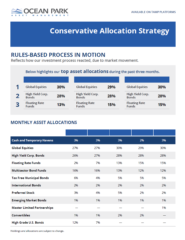
Rules-Based Process in Motion Snapshot: Conservative Allocation Strategy Ending June 30, 2025
Reflects how our truly tactical rules-based investment process reacted due to market movement through June 30, 2025.
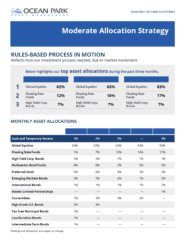
Rules-Based Process in Motion Snapshot: Moderate Allocation Strategy Ending June 30, 2025
Reflects how our truly tactical rules-based investment process reacted due to market movement through June 30, 2025.
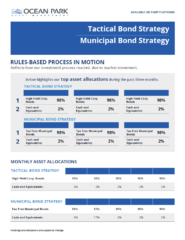
Rules-Based Process in Motion Snapshot: Tactical Bond Strategy & Municipal Bond Strategy Ending June 30, 2025
Reflects how our tactical rules-based investment process reacted due to market movement through June 30, 2025.
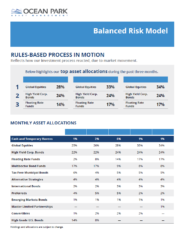
Rules-Based Process in Motion Snapshot: Balanced Risk Model Ending June 30, 2025
Reflects how our truly tactical rules-based investment process reacted due to market movement through June 30, 2025.
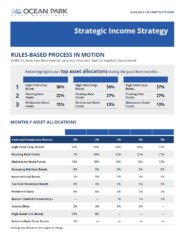
Rules-Based Process in Motion Snapshot: Strategic Income Strategy Ending June 30, 2025
Reflects how our truly tactical rules-based investment process reacted due to market movement through June 30, 2025.
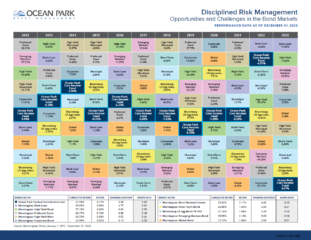
Tactical Core Income Fund Performance vs. Fixed Income Sectors Ending March 31, 2025
A visual view of the Ocean Park Tactical Core Income Fund performance against fixed income sectors from 2012 to 2024.
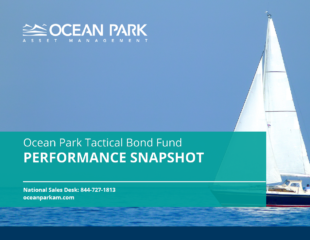
Ocean Park Tactical Bond Fund: Performance Snapshot through June 30, 2025
Monthly performance analysis booklet for the Ocean Park Tactical Bond Fund sourced through Morningstar, updated through June 30, 2025.
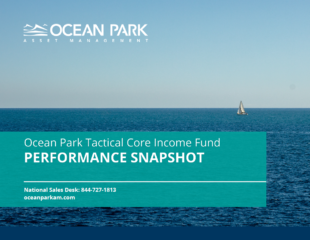
Ocean Park Tactical Core Income Fund: Performance Snapshot through June 30, 2025
Monthly performance analysis booklet for Ocean Park Tactical Core Income Fund sourced through Morningstar. Updated through June 30, 2025.

Ocean Park Tactical Municipal Fund: Performance Snapshot through June 30, 2025
Monthly performance analysis booklet for the Ocean Park Tactical Municipal Fund sourced through Morningstar, updated through June 30, 2025.
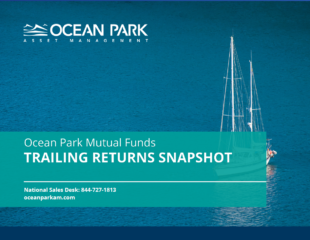
Ocean Park Mutual Funds: Trailing Returns Performance Snapshot through June 30, 2025
Monthly performance analysis booklet for the Ocean Park Mutual Funds, updated through June 30, 2025.

Performance Snapshot: Global Balanced Series Through May 31, 2025
Performance analysis for Ocean Park Global Balanced Series, approved for client use, and updated through May 31, 2025.

Performance Snapshot: SMA Programs Through May 31, 2025
Performance analysis for Ocean Park Programs, approved for client use, and updated through May 31, 2025.

Performance Snapshot: Models Through May 31, 2025
Performance analysis for Ocean Park Models, approved for client use, and updated through May 31, 2025.

Performance Snapshot: Strategies Through May 31, 2025
Performance analysis for a select number of Ocean Park Strategies, approved for client use, and updated through May 31, 2025.

Ocean Park Active ETFs: Performance Snapshot through June 30, 2025
Performance analysis for Ocean Park Active ETFs, approved for client use, and updated through June 30, 2025.
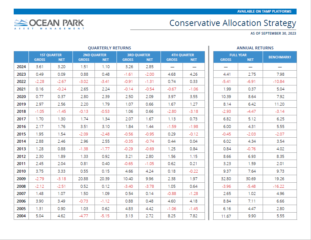
Conservative Allocation Strategy - Quarterly Returns vs. Annual Returns
Conservative Allocation Strategy - Quarterly Returns vs. Annual Returns (Q1 2025)
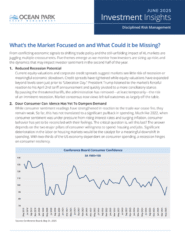
What the Market is Focusing on and What it Could Be Missing
Ocean Park’s June 2025 Investment Insights highlights five key market themes, including reduced recession fears, resilient consumer spending, mixed labor signals, the disruptive impact of AI, and uncertainty around trade policy and Fed flexibility.
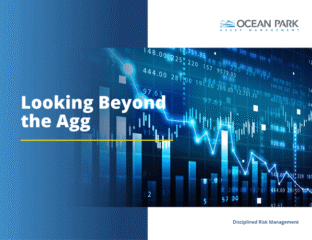
Looking Beyond the Agg
Explore how Ocean Park’s fixed income strategies go beyond the Bloomberg US Aggregate Bond Index to uncover broader opportunities and enhance portfolio diversification.
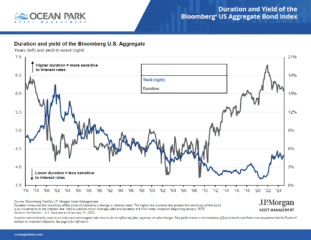
Duration and Yield of the Bloomberg U.S. Aggregate Bond Index
This flyer shows the duration and yield of the Bloomberg U.S. Aggregate Bond Index from January 1, 1976 through March 31, 2025.
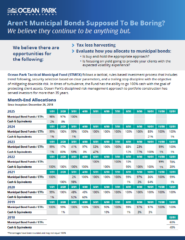
Municipal Bonds are Anything but Boring
Municipal bonds are supposed to be boring, but we believe they’ve been anything but boring. The environment has created an opportunity for tax harvesting and for evaluating how you allocate to municipal bonds.
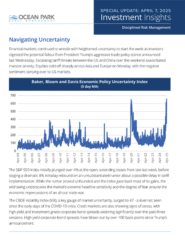
Navigating Uncertainty
Special Update of Investment Insights: Chief Investment Officer, provides perspective on the evolving volatility of the global equity market.
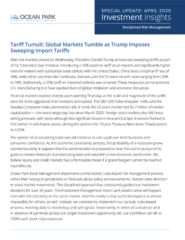
Tariff Tumult: Global Markets Tumble as Trump Imposes Sweeping Import Tariffs
Chief Investment Officer James St. Aubin speaks on the effects of President Trump's "Liberation Day" tariffs.
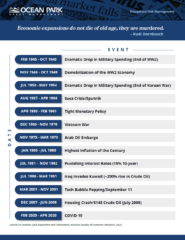
Death of an Expansion Cycle
Investments take the escalator up, and the elevator down.
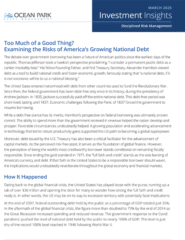
Too Much of a Good Thing? Examining the Risks of America’s Growing National Debt
Chief Investment Officer James St. Aubin examines the risks of America’s growing national debt.
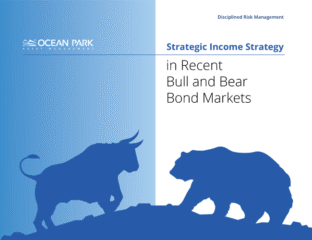
Bull & Bear Markets – Strategic Income Strategy Analysis
See how Ocean Park’s Strategic Income Strategy performed in bull and bear bond markets.
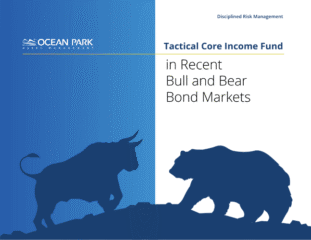
Bull & Bear Markets – Tactical Core Income Fund Analysis
See how Ocean Park’s Tactical Core Income Fund performed in bull and bear bond markets.
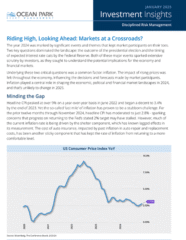
Riding High, Looking Ahead: Markets at a Crossroads
Chief Investment Officer James St. Aubin reviews 2024 and shares relevant data regarding the 2025 economic and market outlook.
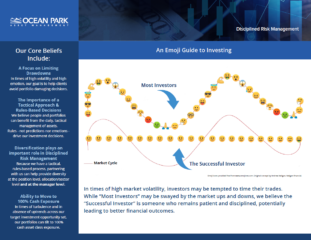
Emotions of Investing
While “Most Investors” may be swayed by the market ups and downs, we believe the “Successful Investor” is someone who remains patient and disciplined, potentially leading to better financial outcomes.
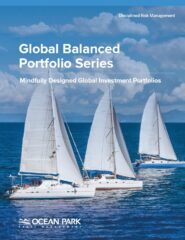
Efficiently Designed Global Portfolios, To Keep You Well Invested
Ocean Park's Global Balanced Portfolios Series brochure.
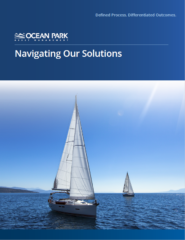
Navigating Our Solutions
An all-in-one brochure that covers our core beliefs, investment process, funds, and strategies.

Moderate Allocation Strategy Brochure
The Moderate Allocation Strategy seeks to enhance return with increased global stock exposure while providing investors integrated risk management disciplines.
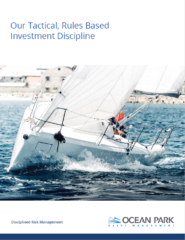
Our Investment Process
Learn about Ocean Park Asset Management’s disciplined risk management approach and investment process.
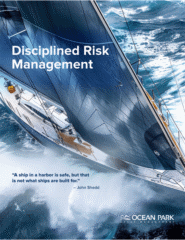
Firm Overview
An overview of our firm, philosophy, investment process, solutions, and investment team.

Performance During Two Major Downturns: Ocean Park Conservative Allocation Strategy
A look at the Ocean Park Conservative Allocation Strategy during the 2008 financial crisis and major market sell-offs.
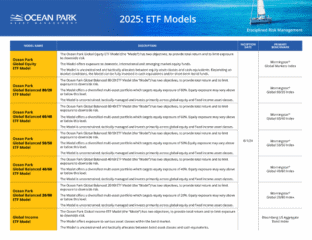
ETF Models Profile Page
Ocean Park ETF Models have two objectives, to provide total return and to limit exposure to downside risk.
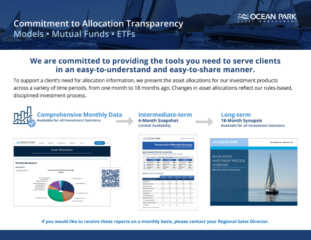
Our Commitment to Allocation Transparency
We are committed to providing you with tools that make your life easier as an advisor. Among the many ways we achieve this are through the variety of asset allocation reports that we make available.
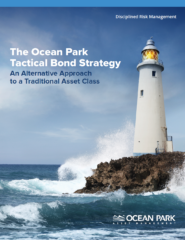
Tactical Bond Strategy Brochure
An alternative approach to a traditional asset class.
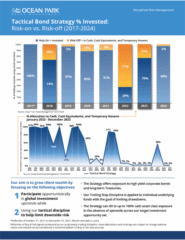
Risk-on vs. Risk-off: Tactical Bond Strategy
See risk-on and risk-off investments since the strategy's inception, as well as the percentage allocated to cash, January 2022 - December 2023.
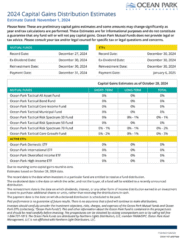
2024 Capital Gains Distribution Estimates
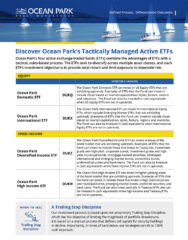
Ocean Park ETF Profile

The Core Fixed Income Challenge: Muting the Sounds of Intellectual Noise
Why fixed income market calls—especially since 2022—have proven to be unreliable, and what potential strategies and solutions advisors may have.
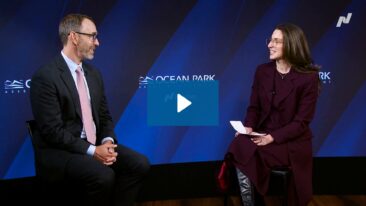
NASDAQ Just for Funds: Managing Risk in Volatile Markets
James St. Aubin, CIO at Ocean Park Asset Management, joined Nasdaq’s Just for Funds to discuss the firm’s distinctive risk-managed investment approach.

Quarterly Webcast Q1 2025
CIO James St. Aubin unpacks key Q1 2025 market trends, while our chief strategist shows how Ocean Park adapted with rules-based strategies.
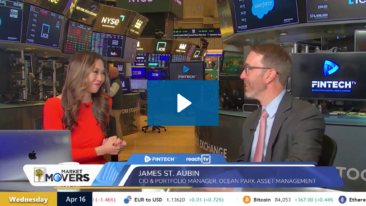
FintechTV: Markets see back and forth trading in April amid tariff uncertainty
James St. Aubin, CIO & Portfolio Manager at Ocean Park Asset Management, joins Remy Blaire to take us through the rollercoaster S&P 500 price action and what it says about market sentiment.
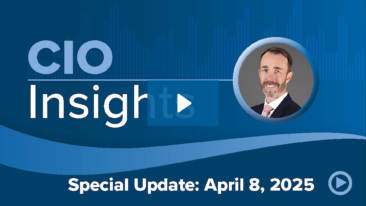
CIO Insights Special Update: April 8, 2025
James St. Aubin discusses recent financial market volatility triggered by President Trump's hawkish tariff announcement.

TAMPs: The Value of Outsourcing
Director of National Accounts, Tiana Brenneise, speaks about the value of outsourcing.
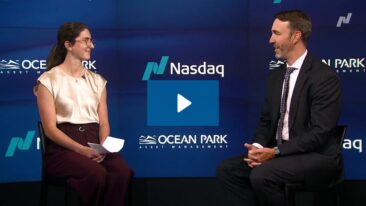
NASDAQ Just for Funds: Navigating Market Risks with Ocean Park’s New ETFs
Danielle Retsky from Nasdaq interviews James St. Aubin, the Chief Investment Officer of Ocean Park Asset Management.
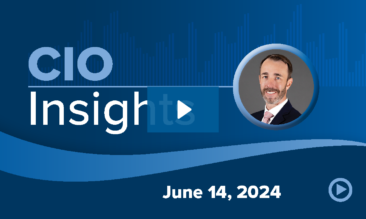
CIO Insights: June 14, 2024
In June’s CIO Insights, James St. Aubin unpacks recent economic reports and the Fed’s June meeting in relation to the markets.

About Us
Since 1989, our founders' rules-based, buy-and-sell disciplines have sought to help investors limit downside risk, grow their wealth, and achieve their investment goals.
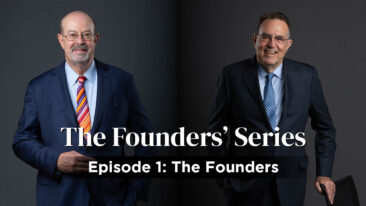
The Founders' Series, Episode 1 | The Founders

The Founders' Series, Episode 2 | A Meeting Of Minds
